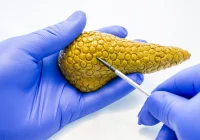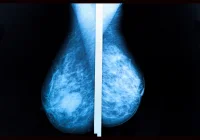Multidetector computed tomography (MDCT) is widely used in the preoperative staging of colon cancer, informing treatment decisions including surgery and neoadjuvant therapies. Despite its prominence in clinical workflows, the tool presents important diagnostic limitations. In Denmark, the extensive Danish Colorectal Cancer Group (DCCG) database provides a robust platform for evaluating MDCT performance on a national level. A recent population-based study investigated MDCT accuracy in predicting T category, regional lymph node metastases and locally advanced disease. Stratification by tumour side and microsatellite status offered a nuanced understanding of MDCT's utility and its diagnostic constraints in colon cancer care.
Evaluating Tumour Invasion Prediction
The study assessed MDCT’s performance in identifying T3–T4 tumours, stratified by tumour sidedness and microsatellite status. No meaningful differences were observed in predictive values between right-sided and left-sided tumours.
Must Read: CT Colonography Offers Superior Value in Bowel Cancer Screening
Both groups showed high positive predictive values (PPVs) at 91%, indicating reliability in identifying advanced tumours. However, negative predictive values (NPVs) remained low—0.43 and 0.45 for right- and left-sided tumours respectively—indicating that MDCT frequently understaged tumours. This trend persisted in the stratification by microsatellite instability (MSI) and microsatellite stable (MSS) status, with NPVs of 0.47 and 0.40 respectively. Consequently, MDCT underestimated tumour invasion depth in over half of patients, raising concerns about its reliability in ruling out advanced disease. The assumption that MSI-related inflammation might skew MDCT accuracy was not confirmed, although clinicians’ prior awareness of MSI status might influence radiological interpretation.
Lymph Node Metastasis and Diagnostic Reliability
MDCT’s utility in predicting lymph node metastasis showed no significant difference between right-sided and left-sided colon cancers, with PPVs of 0.47 and 0.50 respectively. Although the MSI subgroup showed a higher PPV of 0.67, one-third of these patients were overstaged, limiting the reliability of the finding. Specificity was notably lower in MSI tumours, which may reflect both biological differences and diagnostic uncertainty. Interobserver variability and lack of standardised interpretation protocols across institutions may have contributed to these inconsistencies. Furthermore, as the clinical nodes detected via MDCT might not correspond to the nodes examined histologically, definitive conclusions remain elusive. The study highlighted the continuing challenge of distinguishing malignant from benign lymph node enlargement on imaging alone, reinforcing the need for caution when using MDCT for nodal staging.
Locally Advanced Disease: Risk of Misclassification
One of MDCT’s most pressing limitations lies in predicting locally advanced disease, defined as pT3 tumours with extramuscular invasion over 5 mm or pT4 tumours. The study revealed a 33% to 40% overstaging rate across both tumour sidedness and microsatellite subtypes. Although sensitivity was moderate at 0.56, specificity was higher, particularly in left-sided and MSS tumours. Still, the substantial risk of misclassification underscores the difficulty of basing therapeutic decisions—such as the use of neoadjuvant chemotherapy or immunotherapy—solely on MDCT findings. Evidence from recent trials shows that neoadjuvant strategies have not yielded consistently favourable outcomes and have shown benefit primarily in MSS subgroups.
Given the lack of clear predictive accuracy, MDCT should not be used in isolation to select patients for these therapies. The prospect of newer imaging modalities, such as photon-counting CT or PET-CT, remains promising but unproven in routine clinical practice. Additionally, the potential value of MDCT in evaluating clinical extramural vascular invasion remains speculative and requires further validation.
MDCT continues to serve as a standard tool in colon cancer staging, yet its diagnostic limitations demand a cautious approach. With low NPVs and significant rates of under- and overstaging, reliance on MDCT alone risks both undertreatment and overtreatment. The analysis highlighted the need for multi-modal evaluation and further refinement of staging protocols.
Emerging technologies may offer improvements, but at present, MDCT's role in guiding treatment must be carefully contextualised within its limitations. Clinical decisions should integrate histopathological insights and consider molecular tumour characteristics to enhance accuracy and patient outcomes.
Source: European Journal of Radiology
Image Credit: iStock










